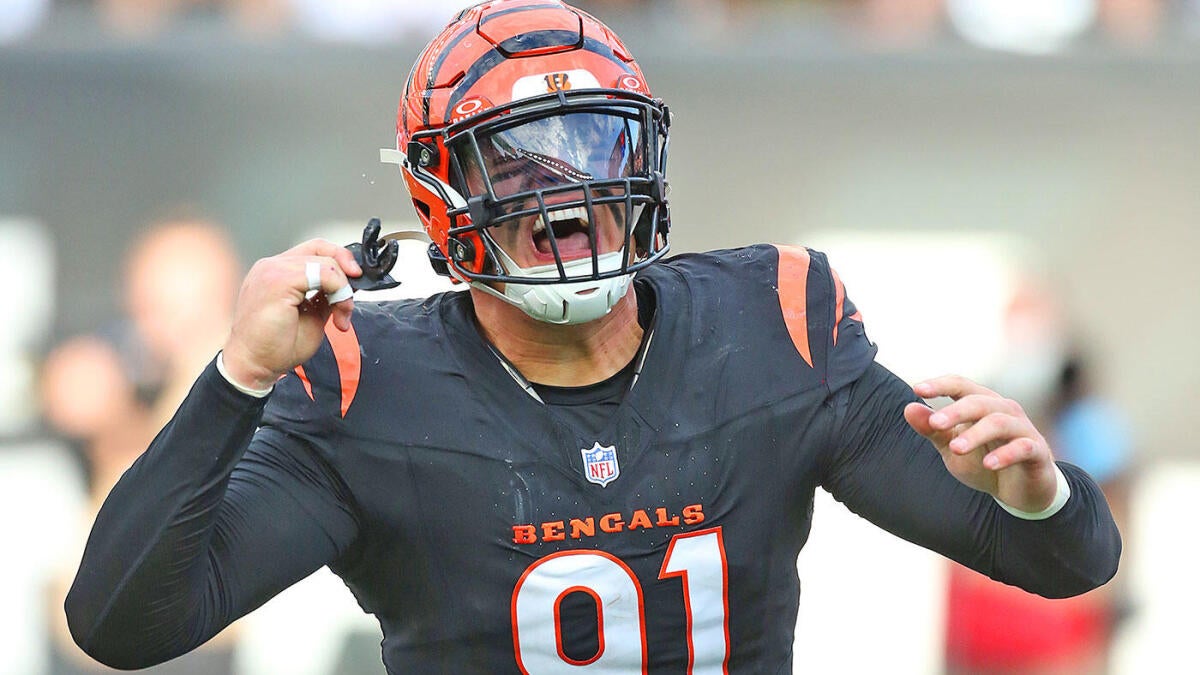Understanding the Trey Hendrickson and Cincinnati Bengals Contract Saga
The ongoing contract dispute between Trey Hendrickson and the Cincinnati Bengals offers a revealing glimpse into the intricate and often emotionally charged world of NFL negotiations. At its heart, this saga outlines not only the professional stakes for an elite athlete seeking fair compensation but also the communication breakdowns and organizational challenges teams face when balancing talent retention with salary cap constraints.
The Value and Stakes for Trey Hendrickson
Trey Hendrickson has firmly established himself as a dominating defensive force. Leading the NFL with 17.5 sacks recently and earning All-Pro recognition, his on-field production has made him one of the league’s premier pass rushers. With 57 sacks during his Bengals tenure, it’s clear he plays a vital role in the team’s defensive success. Entering the final year of his contract, Hendrickson’s unwillingness to play in 2025 without a new deal underscores his determination to secure compensation that reflects his substantial contributions.
This stance is not merely financial; it also stems from a sense of professional validation. The fact that Hendrickson asked for a trade last offseason but stayed on hints at his patience and hope for a fair agreement this cycle. Now, with talks stalled post-draft, his public expressions of frustration and references to “personal” issues with head coach Zac Taylor suggest deeper emotional and relational tensions intertwining with contractual disagreements.
Communication Challenges Complicating Negotiations
At the core of this dispute lies a significant communication rift. Hendrickson’s camp has criticized the Bengals for effectively halting contract discussions for months after the draft. This silence has bred uncertainty and contributed to growing frustration. The incident involving Zac Taylor’s text warning Hendrickson about fines for missing mandatory minicamp heightened the discord, turning a business matter into something more personal. Hendrickson viewed this as a punitive gesture, worsening the situation.
On the team’s side, leaders have largely remained reserved, with General Manager Duke Tobin and Taylor providing few concrete updates. Yet, some paradoxes exist: Taylor expressed satisfaction when Hendrickson voluntarily attended workouts, indicating mutual respect persists despite the public tension. This duality highlights the complexities of balancing discipline and player relations amid high-pressure negotiations.
Organizational and Team Impact
The Bengals face a delicate balancing act. On one hand, Hendrickson’s presence is critical — his absence would create a gaping hole in their defensive line and potentially erode locker room morale given his leadership. On the other hand, the franchise must juggle salary cap realities and their broader roster-building strategy, demonstrated by recent long-term contracts for stars like Ja’Marr Chase and Tee Higgins.
The willingness to extend Hendrickson remains tempered by these strategic considerations, as the Bengals weigh the risks of capitulating too readily against the consequences of losing a premier defender. Navigating this tension is emblematic of modern NFL front office challenges, where financial prudence and competitive ambition must coexist.
The Emotional Undercurrent
Beyond money and management logistics, the dispute reveals the emotional dimensions of professional sports contracts. Hendrickson’s feelings of betrayal and disrespect over stalled negotiations and the tone of communication reflect the human cost of such conflicts. Players invest not just physically but emotionally in their teams, so these battles often extend well beyond numbers on a paycheck.
Conversely, from the coaching staff’s perspective, enforcing discipline and maintaining team order requires clear expectations, especially around participation in mandatory team activities. The interplay between these competing needs—player advocacy versus organizational control—adds complexity to any resolution effort.
Looking Forward: Possible Outcomes and Implications
As the 2025 season approaches, several questions loom. Will the Bengals and Hendrickson bridge their differences through renewed talks, or will the standoff deepen? Trade rumors circulated but have yet to materialize, leaving both parties in a tense standoff. The team’s patience will likely be tested as the season’s start nears, forcing management either to meet Hendrickson’s demands, pursue a trade, or risk losing a key player’s contributions.
How this conflict resolves will not only shape the Bengals’ defensive future but also provide lessons for managing high-profile NFL contract disputes. Transparency, respect, and clear communication might serve as guiding principles to avoid similar situations.
Conclusion: A Microcosm of Modern NFL Conflicts
The Trey Hendrickson and Cincinnati Bengals contract saga encapsulates the multifaceted challenges inherent in today’s NFL player-team relationships. It reflects the intersection of elite athletic performance, financial negotiation, and deeply personal dynamics that can influence outcomes on and off the field.
As the story unfolds, it becomes clear that resolving such disputes demands more than just numbers—it requires balancing authority and advocacy, discipline and empathy. The eventual resolution will likely send ripples beyond Cincinnati, shaping how NFL franchises handle contract negotiations with their stars in the future.











